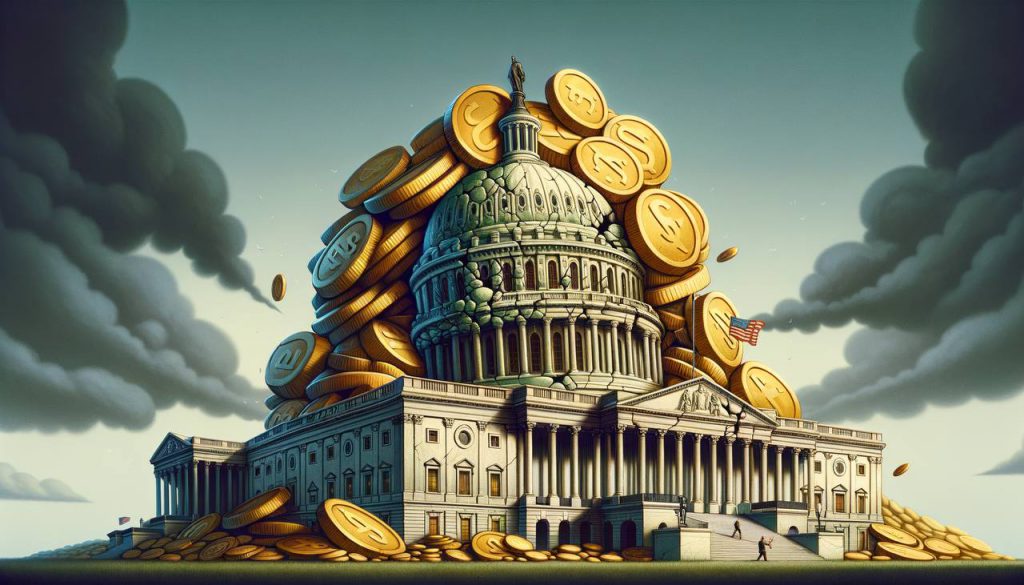The US debt scenario seems to be inflating with each passing second. The debt statistics have ballooned like any other metric recently, adding significant stress to the already overloaded US dollar.
Also Read: US Stock: Warren Buffett Is Dumping Apple For This Precious Oil Stock
The US Debt Stats Now Stand At $37.5T


As per a recent post by the Kobeissi Letter on X, the US debt stats have again ballooned to a new level. The US public debt has now reached a staggering $35.7 trillion mark. Over the last three days, the debt has surged by a noticeable $345 billion, adding more pressure on the US economy.
The post later adds how, since June 2023, federal debt has surged by nearly $4 trillion, or by 14% statistically. At the same time, the portal draws attention to the nation’s current GDP stats, which stand at $1.5 trillion, or -6%.
This roughly explains the complex relationship, adding that the US economic growth is considerably slower than the pace at which the nation accumulates more debt.
“BREAKING: public debt has jumped $345 billion over the last 3 days, hitting another record of $35.7 trillion. Since June 2023, federal debt has surged by a massive $4 trillion, or 14%. Over the same time period, US GDP is up just $1.5 trillion, or ~6%. In other words, the national debt has outpaced the economic growth by 2.7 times over the last 16 months.”
The US government is currently paying $3 billion in interest on its debt per day, highlighting the stark metric’s long-term implications.
Also Read: Ethereum Whale Sells $11.7 Million ETH As Price Dips 10%
Pressure On The US Dollar?
Rising debt metrics are dubbed lethal for the US dollar. For instance, spiraling, spiking debt levels can trigger high levels of inflation expectations, adding more pressure to US dollar demand. At the same time, a ripple effect can happen, compel the Federal Reserve to spike rates, and make the dollar expensive.
Although hypothetical for now, the current scenario is compelling investors to think from all sides to reduce their risk exposure. The rising debt stats can also erode investor confidence, promoting them to pivot to other lucrative investments like gold and bitcoin.
The US debt-dollar relationship also comprises long-term risks. If the debt statistics continue to explode, it can prompt the dollar to decline in value compared to other currencies. Higher debt statistics can also be detrimental to the US government by increasing borrowing costs, which can, in turn, slow down the region’s economic growth.
Also Read: SWIFT’s Bold Step: Global Digital Asset Trials Begin









